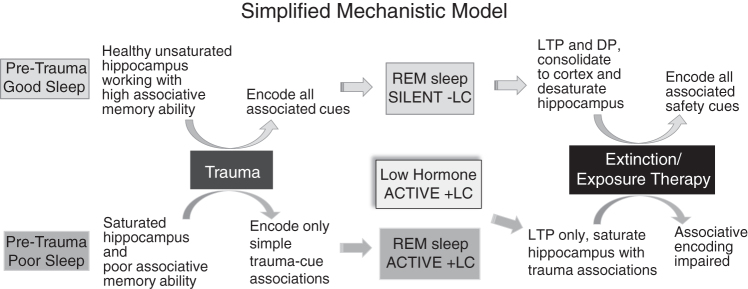FIG. 1.
We propose that the ability to adaptively process a traumatic stressor is dependent on healthy sleep promoting both strengthening (LTP) and weakening (DP) of memory synapses. Weakening synapses requires silence of locus coeruleus (−LC), which normally occurs during REM sleep. DP avoids oversaturation of the hippocampus and allows proper encoding of all associated trauma cues. Conversely, poor sleep during the pretrauma period or maladaptive sleep (+LC) during the post-trauma period can contribute to conditions wherein hippocampal synapses are oversaturated and the person can only encode simple trauma–cue associations, leading to generalization of the fear response and contributing to PTSD development. Females at low hormone stages may be vulnerable to sleep-mediated hippocampal saturation effects if the LC continues firing during REM sleep. Effectiveness of extinction/exposure therapy in encoding cues previously associated with trauma to safety contexts may rely on LTP and DP efficiency, dependent on –LC condition. Hormonal phase and sleep efficiency should be considered in timing exposure therapies to maximize therapeutic outcomes. DP, depotentiation; LC, locus coeruleus; LTP, long term potentiation; PTSD, post-traumatic stress disorder; REM, rapid eye movement.

